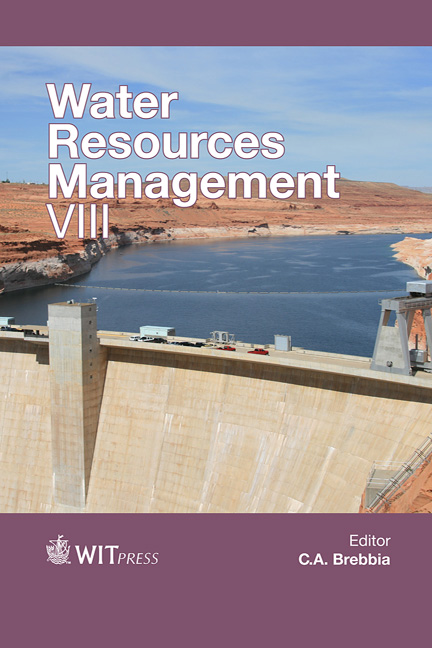Modeling Flow, Nutrient And Dissolved Oxygen Concentrations In The Spokane River Under Multiple Year Conditions
Price
Free (open access)
Transaction
Volume
196
Pages
12
Page Range
127 - 138
Published
2015
Size
1,630 kb
Paper DOI
10.2495/WRM150111
Copyright
WIT Press
Author(s)
Z. Rakib, M. Barber, R. Mahler
Abstract
Waste load allocations in the United States have traditionally been based on historic data. Total Maximum Daily Load (TMDL) policies and stormwater permits are often based on steady-state low flow analysis without considering unsteady flow and pollutant conditions prevalent during stormwater events. Questions surrounding remedial investments for conditions that don’t exist during low flow events have been raised. Furthermore, the frequency of violations under various pollutant removal scenarios has been hard to determine.
The Spokane River TMDL used a 2001 low flow event as the basis for planning multi-million dollar investments in wastewater treatment systems and stormwater plans. This study modified the original CE-QUAL-W2 model to simulate hydrology and water quality over a 1999–2009 period with attention to flow, phosphorus, nitrogen, dissolved oxygen, and river temperature. By calibrating and applying the model for an extended period, we were able to better predict nutrient dynamics under varying flow conditions and facilitate investigation regarding permissible nutrient levels.
Model results indicate that hydrologic conditions outside the low flow period may be cause for concern. Violation of water quality standards occurred outside the 2001 time frame with both phosphorus and nitrate concentrations being much higher in years with higher flows. We were able to successfully demonstrate that additional information concerning stormwater inputs and nutrient cycling would permit better decisions in the future.
Keywords
Total Maximum Daily Loads, algal blooms, hydrodynamic simulation, waste load allocation, water quality modelling





